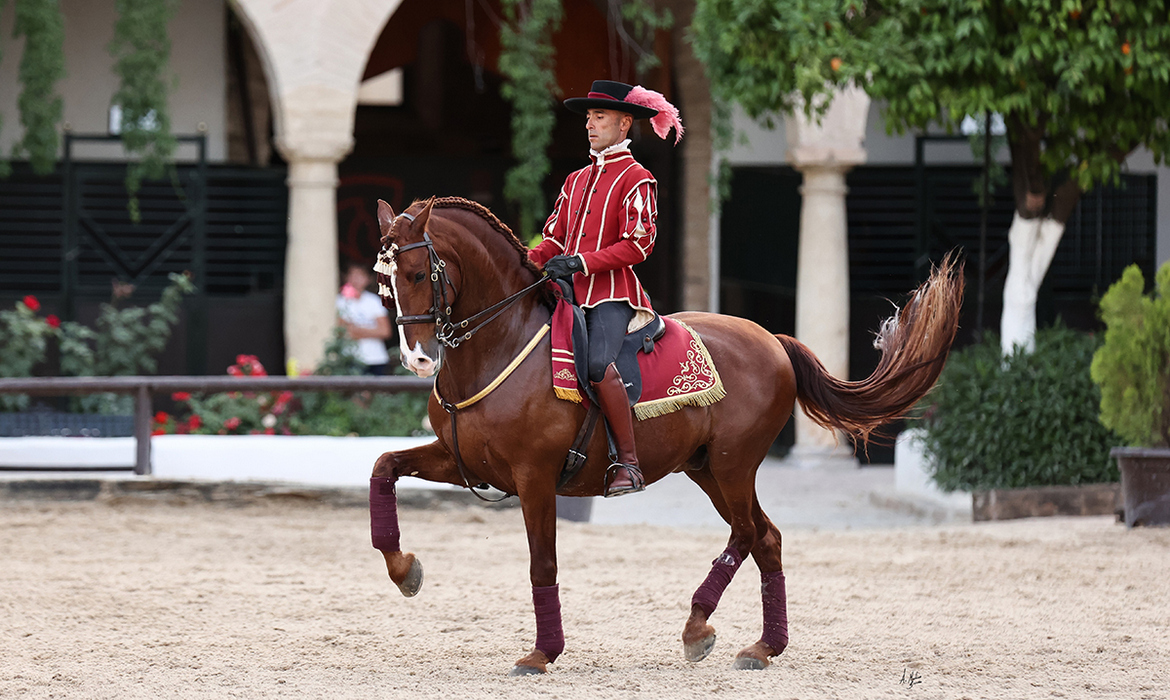Caballo de Pura Raza Española
"Cordoba, mother of the world’s best horses...", Cervantes, "El Quijote".
If any city can stake a claim to being the authentic cultural capital of the Spanish horse, due to its history and prestige, that city must be Cordoba.
Horses have always played a fundamental role in our culture throughout the different periods in the history of Cordoba and its province. The celebrated horses which triumphed in the Roman Colosseum were said to hail from "Corduba", the capital of Baetica, a province of Roman Hispania, according to chronicles of the time. In the time of the Umayyad Caliphs, herds of purebred horses grazed on the foothills near the Caliphate City of Medina Azahara, now a World Heritage Site, and later, in medieval times, the legendary horses known as "Guzmanes" and "Valenzuelas" were among the most highly-prized steeds in the Christian kingdom of Cordoba.
In addition, the construction of the Royal Stables of Cordoba was one of the most monumental world events in the history of horse breeding and led to the creation of that legendary horse breed, the Purebred Spanish Horse. The origin of the Purebred Spanish horse was masterminded by a Cordovan, Don Diego López de Haro, who for over 30 years directed what are thought to be the oldest surviving stables in the Western world. The stables at the Palace of Versailles built by Louis XIV, the Sun King, were modelled on the Royal Stables of Cordoba and horses from here were also sent to found another iconic organisation in the horse-riding world, the Spanish Riding School in Vienna.
The long equestrian tradition in Cordoba inspired Spanish Queen Isabel II to choose this city to found one of the three veterinary schools established during her reign. From these regal origins, the Cordoba Veterinary Faculty has prospered and is now one of the most prestigious faculties in Europe specializing in horses.
This historical milestone was followed by the creation of the National Stud Farm located in the Moratalla Palace (Hornachuelos), the precursor of what later became the Spanish Military Stud Farm, and whose animals grazed on those pastures until well into the 20th century. Another illustrious Cordovan was put in charge of the National Stud Farm, Rafael Castejón, without a doubt one of the greatest horse experts our country has produced.
The first polo field in Spain was located in Moratalla and one of the first national racetracks was built at Turruñuelos.
(Extract from the book "Cordoba and the Horse, past, present and future").
For all these reasons, the people of Cordoba have a soft spot for this noble animal, which they consider their 5th World Heritage.
